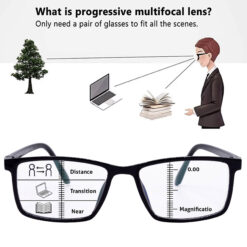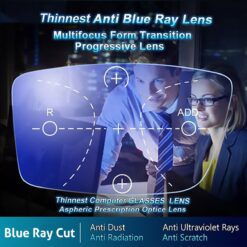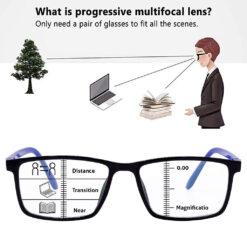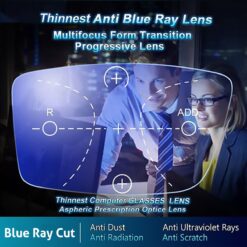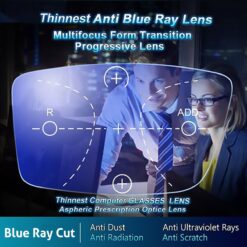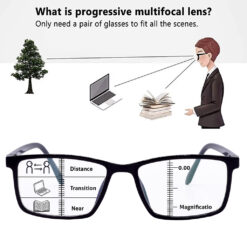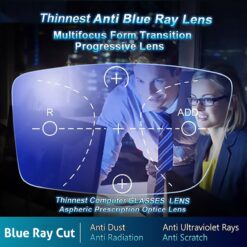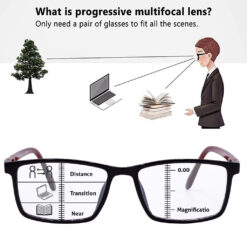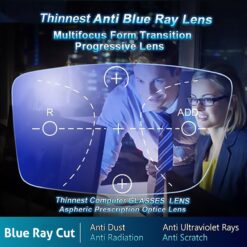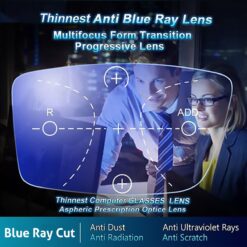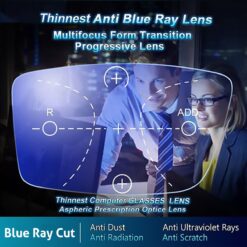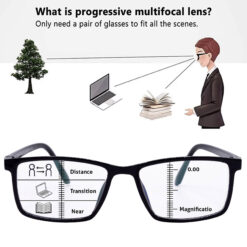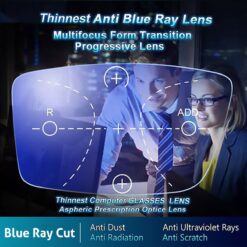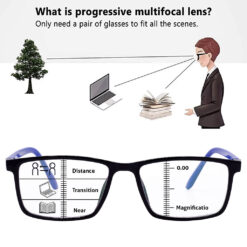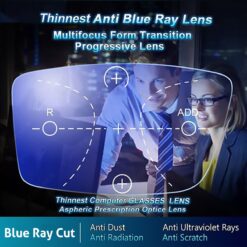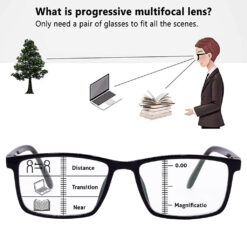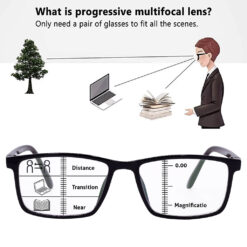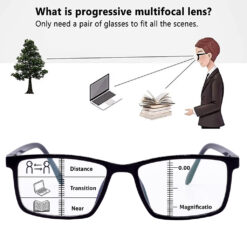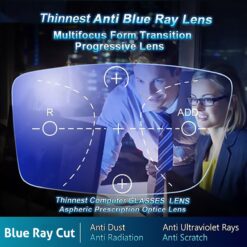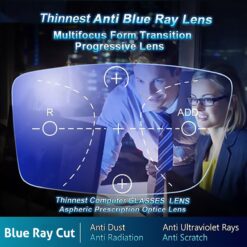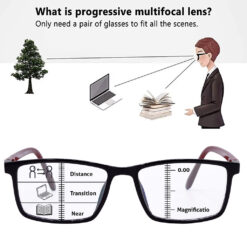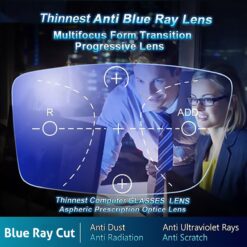Progressive Reading Glasses
Progressive Reading Glasses
Progressive Reading Glasses
Progressive Reading Glasses
Progressive Reading Glasses
Progressive Reading Glasses
Progressive Reading Glasses
Progressive Reading Glasses
Progressive Reading Glasses
Progressive Reading Glasses
Progressive Reading Glasses
Progressive Reading Glasses
Progressive Reading Glasses
Progressive Reading Glasses
Progressive Reading Glasses
Auto focus reading glass for effortless switching
When switching from phone to laptop to paperback, the eyes want a smooth ride without the constant on-off of specs, and that’s exactly where auto focus reading glass steps in, giving a more seamless shift in clarity across distances while keeping life simple for readers who juggle multiple screens and tasks through the day; add blue cut or anti-glare, and the whole setup feels more natural under bright lights and late-night scrolling, especially for anyone who’s tired of hunting for the “right” pair every time.
Why auto focus reading glasses are changing daily reading comfort
Auto focus reading glass is built to reduce the hassle of switching between different focal distances, helping with everyday tasks like reading WhatsApp, scanning a presentation, and glancing at labels in the kitchen without swapping frames, and while some models dynamically adjust power and others rely on clever optics to give a broader usable range, the promise is smoother transitions and fewer interruptions to flow. Here’s what most people miss: for many, the real win is less head tilt and fewer “sweet spot” hunts, because the lens is designed to keep near to mid distances readable as attention jumps from screen to print and back again.
How auto focus lenses adapt from book to screen
Some concepts of autofocus reading glasses use distance-sensing or gaze estimation to tune lens power toward where the eyes are focusing, an approach inspired by AR/VR research, though consumer versions vary in how much of the lens adjusts and how quickly, which means real-world comfort depends on both the lens tech and the user’s viewing habits across phone, laptop, and document distances. In simple terms, the lens tries to do the “zoom” for near tasks while maintaining usable clarity for quick glances around the room, cutting down on that constant remove-and-wear cycle that breaks concentration.
Who benefits most: mobile-first readers, multitaskers, and professionals
If most reading happens on a phone, tablet, or laptop with frequent shifts to mid-distance views like meetings, kitchen counters, or labels, this category can feel like a small luxury that removes friction from daily routines, especially for those who don’t love the adjustment period of progressives or find bifocal lines distracting during rapid on-screen work. For people sensitive to glare or screen brightness, adding blue cut or anti-glare coatings increases comfort, more so in evening use or under bright LEDs, which complements the focus agility of the lens system.
Auto focus vs single vision vs bifocal vs progressive
Choosing the right type isn’t about buzzwords; it’s about matching daily distances, wearing time, and tolerance for lens behavior during quick head and eye movements, which is where a simple comparison helps cut confusion and sets realistic expectations for reading glasses buyers.
Single vision reading glasses: simple and reliable
Single vision reading glasses hold one focal distance, which makes them crystal clear for that specific range and wonderfully predictable for book reading, desk work, or hobby tasks, with no learning curve and minimal distortion, making them a safe, affordable pick when the routine involves long, steady near work rather than constant switching. If mobile use dominates and the head stays fairly steady, single vision often delivers the sharpest text with the least adaptation time, while being easy to replace or keep as a spare.
Progressives and bifocals: when they still make sense
Progressives and bifocals combine multiple focal ranges in a single lens, useful for people who need distance and near correction in one frame, though some users notice swim effects or need time to adapt, which is fine if most of the day is spent wearing just one pair and the brain adjusts to the corridor of clear vision across zones. For steady office routines that move between screen and meeting rooms, these remain a strong, proven option when tuned properly to the wearer’s habits and frame fit.
Where auto focus reading glass fits in your routine
Auto focus reading glass aims to flatten that transition from near to mid without the obvious zones or lines, supporting quick phone checks, laptop work, and glances across the table, but real performance depends on lens design and response, so it shines for multitaskers who want fewer compromises and don’t need full-distance correction baked in. If the day is a blur of notifications, spreadsheets, and printed notes, this approach can feel more natural because it follows attention instead of forcing attention into specific lens areas.
Quick decision checklist
-
Mostly near-only needs with long steady sessions? Single vision keeps it crisp and simple.
-
Need distance+near all day in one pair? Consider progressive/bifocal, accept short adaptation.
-
Jumping between phone, laptop, and mid-range views? Auto focus reading glass can reduce the “sweet spot” hunt.
Blue cut vs anti-glare vs computer reading glasses
Choosing coatings and lens types is about comfort under screens and lights, not marketing jargon; each option helps differently, and combining them thoughtfully makes the most difference during real usage windows like late evening or open-plan offices with bright LEDs.
Blue cut reading glasses: comfort, light sensitivity, and sleep
Blue light coatings can help with light sensitivity and may aid sleep when screens are used before bed by filtering parts of the blue spectrum; they aren’t a cure for all eye strain, but many users report more comfortable viewing, especially in the evening, when glare and harsh tones otherwise feel fatiguing. The key is setting expectations right: better comfort and potentially improved sleep latency for night-time screeners, not medical treatment of eye conditions.
Anti-glare reading glasses: clarity under harsh lights
Anti-glare (anti-reflective) coatings reduce reflections that wash over the lens surface, improving clarity and perceived contrast in bright offices, under LED panels, and on glossy screens, which helps text edges look cleaner and lowers distraction from haloing around light sources. For daytime computer reading glasses, anti-glare is often the first must-have because it enhances sharpness even without changing spectral filtering.
Computer reading glasses for long desk hours
Computer reading glasses balance power for typical monitor distance and may include coatings like blue cut and anti-glare to make long sessions more comfortable, especially for users with extended desk time who want fewer headaches from glare and screen brightness in an open office or home workspace. If most screen time happens after sunset, blue cut becomes more relevant, while anti-glare remains useful all day under mixed lighting.
Mixing coatings: what’s genuinely helpful
A practical combo for many buyers is blue cut plus anti-glare to handle both spectral comfort and reflections, adding smudge-resistant layers for easier cleaning, which matters when a lens is used all day across devices; aim for coatings tested to filter in the 410–460nm range for tangible effect in evening use. If budget is tight, start with anti-glare, then add blue cut if evenings are heavy on screens and sleep feels disrupted.
Choosing the right frame: women’s and men’s reading glasses
Fit and style matter as much as lenses, because a stable, light frame keeps the optics aligned, reduces slip during typing or phone reading, and makes the whole experience feel natural, whether picking womens glasses with delicate lines or stylish glasses for men with clean silhouettes for a professional look.
Reading glasses for women: lightweight, stylish, and practical
Reading glasses for women benefit from lightweight materials, soft nose pads, and balanced temples that don’t pinch, so long sessions feel easy, while shapes like soft cat-eye, oval, or slim rectangles keep text visible without cutting into the field of view; blue cut options pair nicely with mobile and laptop use for everyday comfort. Stylish reading glasses for women also play with subtle color accents that complement skin tones and outfits, adding personality without compromising clarity.
Mens reading glasses: minimalist, sturdy, and office-ready
Mens reading glasses often lean toward minimalist half-rim or full-rim designs in stainless steel or TR90 for durability, slim hinges that resist wobble, and matte finishes that hide smudges, all of which keep the look sharp and practical for desk work and meetings; anti-glare coatings help under strong indoor lighting for crisp, reflection-free reading. Stylish glasses for men balance low weight with rigidity so the frame doesn’t flex when looking down at a phone or switching to the laptop mid-call.
Ladies spectacle frames and latest chashma design trends
Ladies spectacle frames in the latest chashma design bring thin profiles, soft neutrals, and lightweight construction that keeps the center of gravity close to the face, helping with stability during quick glances between screens and notes, while still adding a touch of flair through gentle gradients or polished edges. The trend favors clean, comfortable shapes that support long reading sessions with minimal adjustment during the day.
Fit tips for nose pads, temples, and bridge comfort
A good fit keeps lenses aligned with the eyes: choose adjustable nose pads if the bridge is narrow, check temple length so tips sit comfortably without pressure, and aim for a frame width that matches facial width to prevent sliding, which is crucial for keeping auto focus or single vision optics delivering their best clarity during work. Stable fit means fewer refocusing moments and a more effortless reading flow across tasks.
Power selection made simple
The ideal reading specs power depends on typical reading distance, whether the main use is books, mobile, or monitor, and how long sessions last, which is why a quick self-check on distance and comfort is worth the minute before adding to cart.
Reading specs for books, phones, and laptops
Phones and paper often sit closer than monitors, so a slightly higher power may suit book or mobile-first users, while a slightly lower power supports computer distance to reduce eye strain over time; this balance is key for those mixing tasks through the day, especially if auto focus reading glass is chosen to handle quick shifts between near and mid. If text feels sharp but tiring after 20–30 minutes, consider a small adjustment or a prescription check to dial in comfort.
Signs you might need prescription reading glasses
If one eye sees sharper than the other, headaches persist, or the ideal clarity zone feels narrow, prescription reading glasses can correct differences between eyes and refine cylinder/axis values, which off-the-shelf readers can’t address, improving comfort and reducing the need to reposition the head while reading or scrolling. Blue cut and anti-glare can be added to prescription lenses for a complete, tailored setup.
Single vision glasses vs adjustable claims
Adjustable or “one power” claims vary widely; many users still prefer consistent single vision clarity or well-tuned progressives for reliability, while advanced autofocus concepts show promise but depend heavily on lens area and response speed, so expectations should match the specific product’s capability and return policy. When in doubt, prioritize proven optical clarity and comfortable fit first, then layer optional features as needed.
Blue light blocking reading glasses: what the research says
The comfort story is more nuanced than hype, and that’s okay; it’s about finding what helps in real life rather than chasing absolutes, especially when evening screens and bright indoor lighting are part of everyday routines.
Sleep, comfort, and eye strain: what to expect
Blue light glasses may support healthier sleep when screens are used near bedtime and can reduce light sensitivity for some users, though eye strain has many causes like reduced blinking during focused tasks, which coatings alone don’t fix; breaks and proper ergonomics still matter alongside coatings for the best results. Many Indian users find the combo of blue cut and anti-glare more comfortable during mixed mobile and laptop use under LED lighting, particularly in the evening window when sleep quality is a priority.
When blue cut helps most: evening use and bright offices
Blue cut helps most when glare and high-energy light feel harsh, like late-night scrolling, binge reading on tablets, or open-plan offices with strong overhead LEDs, where filtering part of the blue spectrum takes the edge off the visual load so text feels less aggressive to the eyes. It’s a comfort feature, not a medical treatment, and it pairs well with lens clarity and proper power selection to make long sessions feel manageable.
Myths to skip: what blue cut doesn’t do
Blue cut doesn’t replace good lighting, blink breaks, or a correct prescription if one eye differs from the other, and it doesn’t magically remove all eye strain, but for many users it softens the overall feel of screens, especially at night, which can be a worthwhile, modest upgrade when choosing computer reading glasses or mobile-first reading specs.
Build quality and lens materials
Durable frames and well-applied coatings are the backbone of daily comfort; a stable, lightweight build maintains alignment and prevents constant nudging up the nose, which keeps the viewing zone consistent and reduces fatigue during typing, reading, or scrolling breaks.
Lightweight reading glasses: comfort without wobble
Materials like TR90 and slim stainless steel give a light, flexible feel that stays put during head movement, while balanced weight distribution prevents hotspots on the nose, making long sessions at the laptop or on the phone much more pleasant without constant frame adjustments. Light doesn’t have to mean flimsy if hinges and temples are well-designed to hold shape over time.
Coatings that matter: smudge resistance and anti-reflection
Smudge-resistant layers keep lenses clearer between cleanings, and anti-reflection reduces stray reflections from overhead lights and screens, which together improve readability and reduce annoying ghosting around text and icons during work or reading on glossy displays. Pair with blue cut if evening use is frequent or lights are harsh, so comfort stays consistent across the day-night cycle.
Durability, hinges, and daily wear
Look for spring hinges that allow slight flex without bending out of shape, smooth temple tips that don’t bite, and lens edges that are finished neatly, because these little details add up to a frame that feels solid and remains aligned, preserving optical performance for months. A protective case keeps coatings pristine when tossed in a bag between meetings or errands.
Best budget reading glasses: value without compromise
Affordable reading glasses can deliver solid clarity and comfort when the power and fit are right, especially for users who want a dependable pair for reading, mobile use, or as a backup, and then add premium coatings later once daily needs are clear. If budget allows, step up to blue cut plus anti-glare for screen-heavy routines to improve comfort under variable lighting and evening usage.
Affordable reading glasses vs premium upgrades
Budget models cover essential clarity for near tasks and casual screen time, while premium upgrades add refined coatings, lighter frames, and better hinges that hold alignment longer, which makes sense if reading or laptop work runs for hours daily and a stable, comfortable fit matters more over the long haul. Start with the right power and fit, then layer coatings as routine demands grow.
When to invest in prescription features
Invest in prescription reading glasses if there’s a difference between eyes, astigmatism affects clarity, or headaches persist; the tailored correction can unlock a wider sweet spot and reduce strain, especially during laptop and mobile multitasking where the eyes switch targets constantly through the day. Coatings and frame upgrades then complement that precise optical base for a well-rounded setup.
Product comparison: auto focus vs two common alternatives
-
Auto focus reading glass: Smooth transitions for near-to-mid tasks like phone, laptop, and labels; comfort can depend on lens responsiveness and area of dynamic adjustment; great for multitaskers who don’t need full-distance correction.
-
Single vision reading glasses: Sharp, predictable clarity at one near distance; best for steady reading or mobile use when the working distance is consistent; minimal adaptation and great value.youtube
-
Computer reading glasses (with anti-glare/blue cut): Tuned for monitor distance with coatings to reduce reflections and light sensitivity; ideal for long desk sessions and evening screen time; a practical middle ground for office routines.
2025–2026 trends: smart features and evolving designs
Innovation is moving toward smarter focusing and thoughtful safety considerations, with research-inspired approaches that estimate viewing distance and adjust lens power toward what the eyes need in the moment, while designers keep frames slimmer and lighter to make daily wear effortless for readers and professionals. On the style side, cleaner silhouettes and minimalist finishes continue to dominate, aligning with practical daily use where comfort and clarity get top billing alongside subtle, modern looks.
Autofocus innovation and safety considerations
Advanced autofocus concepts use signals like gaze direction and distance sensing to update lens power, aiming to bring instant clarity where attention falls, though current consumer approaches vary and raise sensible questions about responsiveness during critical tasks, so buyers should match expectations with how and where they plan to use the glasses most of the day. For general reading and screen work, the promise is convenience and fewer interruptions, which is where these models feel most at home.
Fashion meets function in reading specs
Reading specs today blend light frames, anti-glare clarity, and optional blue cut for evening comfort, focusing on stability and easy wear over long sessions, with gentle colorways and refined shapes that fit Indian preferences for subtle elegance and day-to-night versatility in both womens glasses and stylish glasses for men. This balance makes it simple to pick a pair that looks good and performs reliably across tasks without fuss.
Care and maintenance: keep clarity crisp
A simple care routine keeps lenses clear and coatings effective, saving those extra seconds of wiping during busy days and preserving that just-cleaned sharpness that makes text pop on screens and paper alike, especially in bright lighting where smudges are most distracting.
Cleaning routine for coatings and longevity
Use a microfiber cloth and lens spray or mild soapy water, avoid tissues or rough fabrics that scratch coatings, and pat dry gently to prevent streaks; regular light cleaning beats occasional heavy scrubbing, which can wear down protective layers over time. Keep a spare cloth in the case and desk drawer to make daily upkeep effortless.
Storage and scratch prevention
Store in a hard case when not in use, place glasses lens-up on a table, and avoid leaving them on hot dashboards or under direct sunlight, which can stress frames and coatings; these small habits keep lenses looking new and performing at their best month after month. If frames loosen, adjust the screws promptly to maintain alignment and consistent clarity.
Buying online from opticalindia.com: what to check
Buying reading glasses online is straightforward when a few basics are set: power, frame size, coatings, and return confidence, which together ensure the pair fits well and performs across daily tasks like reading, browsing, and late-evening scrolling sessions under mixed lighting.
Sizing, returns, and lens options
Check frame width, bridge size, and temple length, pick coatings that match your routine (anti-glare first, blue cut if evenings are screen-heavy), and choose a return policy that allows an adjustment window in case a different power or style fits better after a week of real use across phone and laptop. Lightweight options add comfort when reading on the go or during commuting breaks.
Prescription upload and power checks
If text still feels off after a couple of days, or one eye strains more than the other, upload a prescription for a refined lens setup that addresses differences between eyes and astigmatism, then layer coatings for screen comfort that matches work patterns and sleep goals. This tailored route often pays off for all-day readers and professionals who move between devices constantly.
Quick answers: People Also Ask
-
Do auto focus reading glasses really work? They aim to smooth near-to-mid transitions for tasks like phone and laptop use, with comfort depending on lens design and responsiveness; many users like the convenience for everyday reading and screen work.
-
Are auto focus glasses better than progressives? They can feel more natural for near-to-mid tasks without zones or lines, while progressives remain stronger if distance and near corrections are needed in one all-day pair.
-
Blue cut vs anti-glare: which should I pick? Anti-glare boosts clarity by cutting reflections; blue cut helps with light sensitivity and may support sleep when using screens at night, and many buyers choose both for balanced comfort.
-
Can blue light glasses reduce headaches and help sleep? They may reduce light sensitivity and improve sleep timing for evening screen users, while eye strain often needs breaks and ergonomics in addition to coatings.
-
Are “one power” readers worth it? Experiences vary; some appreciate convenience, others prefer consistent single vision or tailored prescriptions, so it’s smart to check return policies and match expectations to real-world use.
Conclusion
Auto focus reading glass brings a welcome dose of convenience to daily life, especially for readers who bounce between mobile, laptop, and quick mid-range views, and when paired thoughtfully with anti-glare and, if needed, blue cut for evening comfort, the result feels calmer on the eyes through long days and late nights; for steady near work, single vision stays superbly sharp, while progressives still serve those who need distance and near in one pair, so the smartest move is to match lens type to routine, choose a stable, lightweight frame, and keep expectations grounded in comfort and clarity over time.

